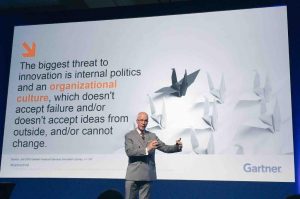By popular demand from our recent Twitter poll, this week we dive into multi-channel marketing problems and opportunities.
Multi-channel marketing problems and opportunities seemingly exist in equal measure. We seem to be living through the conclusion of multi-channel with brands bursting at the seams under the weight of all the new channels that technology has created.
So, to help clarify things, in this post we’ll cover:
- What multi-channel actually means and how it is different to omni-channel?
- The downside of multi-channel
- The solution
- Conclusion
What is multi-channel and how is it different to omni-channel?
First off, let’s clear something up because these terms seem to be very similar but, as you’ll see, the strategies are very different and the terms seem to cause endless confusion. So, what is the difference between multi-channel and omni-channel?
Multi-channel marketing
The multi-channel approach aims to get the word out using as many channels as possible, usually more than 2. Rarely are the channels connected and working together in an integrated way. Organisations invariably find themselves operating a multi-channel model, having added new channels as and when they become available. Lots of work for lower quality output and poorer results.
Omni-channel marketing
The Omni-channel approach integrates every channel to engage with customers as a holistic whole, rather than treating the channels as discreet siloes. An omni-channel approach taps directly into the cornerstones of integrated marketing; coherence, consistency, continuity and complimentary. Omni-channel prioritises the overall experience as the sum of interactions with the brand through each and every channel aiming to ensure these are overwhelmingly positive. Omni-channel is a truly customer-first approach, building stronger relationships between consumers and brands by better meeting needs at every stage.
Check out our recent blog on integrated marketing here, discussing the fundamentals of an integrated campaign which would be delivered within an omni-channel strategy.
Brands with a defined omni-channel marketing strategy achieve on average a 91% higher year-on-year increase in acquisition and importantly, customer retention.
So, what’s wrong with multi-channel?
It’s not that there is anything intrinsically wrong with multi-channel it’s just not an approach that optimises either the activity or the individual channels themselves. As marketers, we should always be collectively striving to improve what we do and how we are doing it. As the consumer has matured with technology, we now understand more than ever the connected nature of marketing channels. The immediacy culture that technology has created and the huge change in customer behaviour resulted in many brands struggling to keep up. Multi-channel seems like a place we have arrived at at the end of a race to add as many channels as possible, testing, learning as we go (sometimes!). Smart brands in this place are now looking to see how they can connect the channels and offer a better, more connected, experience for the customer. Why? Because it results in improvements from awareness to acquisition through to retention.
I promised myself I wouldn’t bang on about siloes again so all I will say is that the pinacle of multi-channel is usually a whole host of siloes in marketing, at worst working against each other with arbitrarily assigned KPIs that bear little relation to the whole. Which is not a place anyone wants to be in. We see our role as a full service digital agency to integrate these around a holistic view of the customer, to get a better return on investment for our clients and a better experience for their customers.
The real danger of multi-channel is an unwillingness to connect the channels, that comes down to organisation and culture. But to be honest without the appetite to change innovation is unlikely.

Image Gartner financial services innovation survey.
So, what’s the solution?
Shift from multi-channel to omni-channel, simple eh?
Ok so perhaps not that simple. We’ve found the best way to connect all the dots requires some sort of catalyst, a simple way to shift tac from one strategy to another. It starts with the brand. Very often traditional brand strategies haven’t been updated to incorporate digital and very often don’t consider 2-way, always-on channels. This means starting from a bad place that will never get your where you need to be.
From a communications perspective, we’ve found that developing a content platform or digital experience, driven by an updated brand strategy, is a great place to start. It connects the traditional above-the-line channels with digital and it’s then reasonably straightforward to re-align the channels around this. Importantly, it gives the disparate teams something to rally around.
The components:
Research and data
We look at trends, qualitative research and data covering four areas; brand, customers, competitors and landscape. This gives a complete overview enabling us to understand what the challenge is, where the opportunities lie and a deeper understanding of the customer.
Segment to build personas
However you slice up your customer research and data, your aim is to segment, creating smaller affinity groups. Once you have these you can develop personas, defining a picture of the person beyond the data. Adding substance like media choices, needs, passions and goals helps build up a fuller picture.
Customer journeys
Mapping these is vital. Data is an essential component, aim to understand which channels are relevant to each given persona. Importantly, the goal is to understand where the barriers exist, blocking the customer’s movement towards purchase and removing these. You can’t do this unless you know firstly what they are and secondly at what stage of the customers journey they come into play.
If you do this, you can confidently market holistically to the customer with tailored activity at each channel to move the customer towards purchase.
Again, an integrated content marketing approach is the perfect solution as it prioritises putting the right content in the right place to make this happen.
Creativity and technology
It’s hard to separate these now so maybe let’s talk about the idea. In an omni-channel world the idea that drives what you produce and what the consumer sees is channel agnostic. In an omni-channel world the digital experience is at the heart, with consistent messaging adapted for the nuances of each channel and relevant to the journey stage. Consistency is key. Think of a story, a big one, where you tell only the most relevant bits at a given time and place to satisfy the audience, motivating them to move onto the next chunk.
For DVO, this kind of conceptual creative is found at the intersection of traditional communications, editorial and technology-led thinking.
Activation
Activation in an omni-channel world requires meticulous planning and organisation. We’ve experimented with various formats, arriving at a universal content plan as the most simple and effective, layering this above the channels to manage implementation. In practice, we’ve ended up doing some of the channel work where the brand in question doesn’t have resource, but we’ve always found a big picture view keeps everyone involved engaged.
Improvement
Assigning the right objectives and channel KPIs is vital when moving away from multi-channel to omni. Channel KPIs move from being arbitrary to laddering up directly to marketing and business objectives within the omni-channel strategy. It’s vital you do this so you can measure the effectiveness of the whole. This represents another great opportunity to align teams, it gives them purpose outside of their daily activity, demonstrating how their input impacts on the wider objectives. It’s important they know this of course.
Conclusion
So 2017 has been tagged as the year that brands start to optimise multi-channel, better integrating individual experiences around the whole. So, omni-channel then? In our opinion this change needs a catalyst, something real, that demands an omni-channel approach and integrated content marketing fits the bill.
We’ve thought long and hard to create simple road maps for our clients to get them on a path to realigning their marketing around the customer expereince. If you’re looking to transition from multi- to omni-channel and want the gap between your brand and customer to stop widening then contact us here, or give us a call, 020 3771 2641. You can also sign-up for our newsletter at the top of this post on the right hand side.








